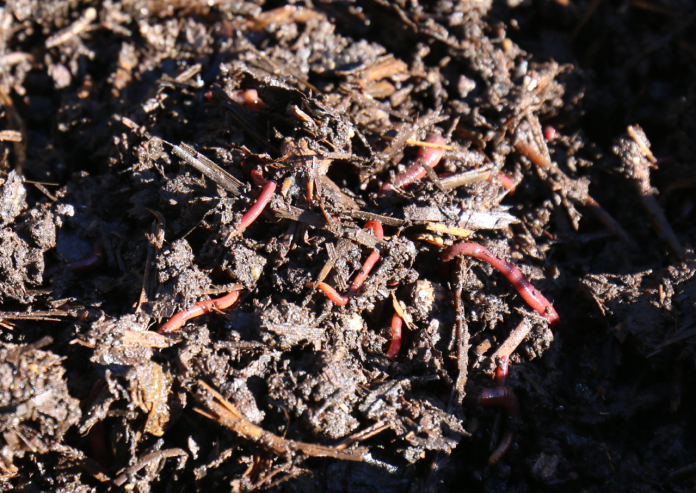It is common to draw a distinction between composting systems and worm systems, but they are more similar than you might think. Good composts will all have worms contributing to the decomposition in some way, at some stage, and worm farms need compost microbes doing lots of the work, not just the chomping, grinding work that the worms do.
In hot composting systems, the initial composting phases are too hot for worms to colonise the pile. But as our piles begin to cool down (below 32o C), the worm numbers will go through the roof, until the pile is a seething mass of worms.
The abundant microbial activity we activated in the hot stage of composting will have made the food and garden organics in the compost the perfect home and meal for our worm friends. Once the worms have had a good feed, their numbers will start to decline, letting us know the compost is ready for the garden.
In cooler composting systems (Gedye-style bins) the temperature rarely gets over 32o Celsius, so the worms can be active from the early stages of composting and for the duration. In fact, cool compost bins that are fed a great balanced compost recipe are what we like to call ‘free-range worm farms’, the worms can come and go via the bottom of the bin, but when we do our job well, they’ll stay and feast as long as we keep the conditions just right.
Cool composters can use the presence and number of worms in their bin as a sign of how well their compost recipe is working; the more worms, the better the composting conditions.
From their name we know that worm farms (vermicompost) systems – either commercial units or home-made – need worms in them to work properly, but if it was just the worms trying to break everything down, they’d be having a hard time.
A whole host of other compost microbes will be present on the organic material in our worm farms and will be doing much of the decomposition work in a well-functioning set-up.
The digestive tracts of worms are full of beneficial microbes. As they wiggle their way through the scraps they spread these important microbes. On top of that, the nutrients the worms get from eating and digesting these microbes end up at the bottom of the farm, as precious worm castings, with their available nutrients for our plants.
The only compost we can think of that does not use worms at any stage is commercial compost that is processed hot and fast. The hot stages are too hot for worms, then, when cooled, the compost is graded and sold (or just moved out) before worms can get a chance to colonise the pile and weave their worm, nutrient magic.
We hope your compost is also vermicompost and vice versa!
For more on ‘Finishing/Curing’, ‘Worm-farming’ and ‘Free-range worm-farming’, look up previous articles on the YIMBY website.
– Joel Meadows and Mikaela Beckley work with *Yes In My Back Yard, (YIMBY), a community-scale composting initiative in Castlemaine and surrounds. Send questions or comments to hello@yimbycompost.com, or to book in for a compost workshop.







